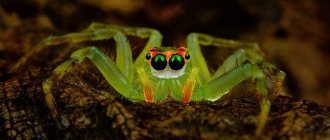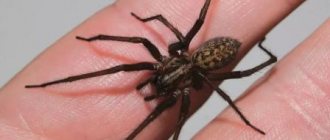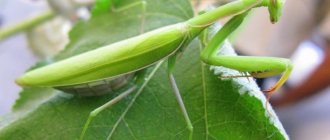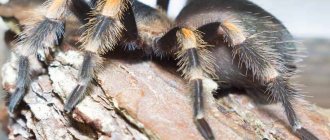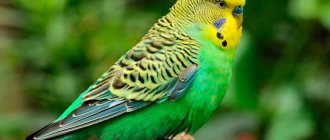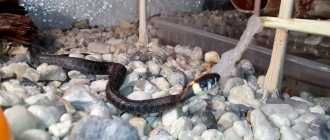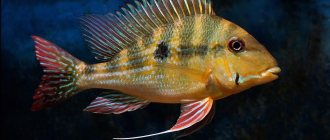Spiders 08/07/202010603 views
So, you had a desire to have an exotic pet, and you wanted to buy yourself a tarantula spider. There is a lot that speaks in favor of your decision. Tarantulas are great animals to keep at home: they take up minimal space, you need to feed them once a week (or even a month), you can always surprise your friends and relatives with this pet. But where to start?
First, it should be said that not all tarantulas are safe to have as a first pet. Asian, Australian and African species are completely unsuitable as the first spider. The fact is that they are extremely aggressive and have a very toxic poison. Spiders of the New World are ideal for a beginner, namely most of the species from such genera as Acantoscurria, Brachypelma, Grammostola. These spiders are quite unpretentious, cheap and for the most part non-aggressive. In fact, you can get anyone as your first spider, but some of these animals can pose a potential, although not fatal, danger, and there may be species that are very demanding in terms of keeping conditions.
Kit for tarantula genus Brachypelma “Standard”
House spider tarantula for beginners
As a rule, large spiders are found in the tropics, where the climate is constantly warm and humid. Some species prefer to live in the ground, where they build entire labyrinths, as well as in trees, constructing huge trapping nets. Often, the habitat of some species depends on age: at a young age they are found in the thickness of the earth, and as they grow older they move to trees or plants.
It is important to know! When keeping the tarantula spider at home, conditions should be created that are close to natural. To do this, before purchasing it, you need to study the features of the environment in which they prefer to live. If this is not done, the animal will quickly die from stress.
You should always remember that these spiders are poisonous, despite the fact that they have a peaceful nature and do not show aggression. For beginners, we can recommend the following types:
- Brachypelma Albopilosum (Brachipelma Albopilosum) leads a terrestrial way of life and is distinguished by the most calm behavior. The body size, which has a pinkish-brownish color, reaches about 16 cm. The spider bites painfully, but its bite does not pose a danger to humans. Females can live about 20 years, while males live only 3 years. It is unpretentious in care, and the diet is based on small insects. Can weave a web, although not a large one.
- Avicularia Versicolor prefers to live in trees. Adults are distinguished by their bright colors, with a predominance of blue-blue tones. The body length is about 5 cm, and together with the paws - 16 cm. It weaves a huge web, making a hole out of it for itself and securing it under the ceiling of the terrarium. It leads a nocturnal lifestyle, and during the daytime it stays in its shelter. It moves quite quickly, so it is very difficult to catch it. Females can live for about 8 years, while males can live for only a couple of years. Although the spider is poisonous, its poison is not dangerous to humans. You can pick up the spider without any problems, since its hairs do not contain toxic components.
For professionals, the species “Lasiodora Parahybana”, “Grammostola”, “Acanthoscurria” are suitable. The Goliath tarantula is considered a real decoration of any collection, and is also one of the most beautiful spiders in the world. Reaches a length of about 28 centimeters.
Spider - tarantula - the kindest female walks, eats and gives a paw!))
Choosing a home
After choosing a spider, you should think about where it will live. For a spider, it doesn’t matter where to live, the main thing is that the conditions there are good. Food containers can serve this purpose - this will be the best home for the spider if it is still small. You need to make holes in the container for ventilation, fill it with soil and that’s it. Convenient, practical, not expensive. However, if you decide to provide the spider with a more beautiful home, then for this purpose you will already need a terrarium. How to choose a terrarium? It all depends on the type of spider: there are terrestrial, burrowing, arboreal and intermediate species. It is worth considering that the type of young and adult spiders may differ. For ground spiders, horizontal or cubic terrariums are suitable. These spiders can be found much more often walking around your home. For burrows, both a horizontal and a cubic terrarium may be suitable, but it is worth considering that a large amount of soil should be poured into it. In addition, burrow spiders really do not like to be in plain sight and come to the surface only at nightfall, while semi-burrowing species can stay near the burrow and hide in case of danger. Woody species require a vertical terrarium. Such spiders will build air tunnels from their webs, sometimes embedding a small amount of soil into them to strengthen their homes. Regarding the size of the terrarium, it should be said that you should not strive to purchase a huge terrarium, since the animal will be constantly under stress, and this will affect its health. The fact is that spiders prefer to be safe in narrow conditions, so if you put a spider in a large space, you risk its health. In the wild, spiders also look for any voids, cracks in trees, or hollows, or even dig holes themselves where they feel safe. You can arrange the terrarium itself by putting in it shelters for the spider, all kinds of driftwood and decorations. Such arrangement is sometimes even necessary, especially for tree species that require a foundation for building a home. However, when installing natural decor, such as live plants, driftwood, or bark, into a terrarium, you need to be careful - organic materials can begin to rot or mold, and pathogenic bacteria can also develop on them. Such materials should be treated thermally, but in no case should insecticides or toxic substances be used, as they can harm the spider.
Terrarium 30*30*30 cm PetPetZone (spider)
What to feed a tarantula spider at home
Many believe that, judging by the name, these spiders feed on birds. In fact, this is not the case, since the diet of such animals in nature is very diverse. Therefore, the diet of tarantula spiders consists of:
- From crickets.
- From grasshoppers.
- From cockroaches.
- From flies.
- From moths.
- From moth caterpillars.
Tarantula spiders kept at home are occasionally given chicken (raw), fish, and small rodents. Adults are fed 2 times a week, and juveniles are given food 4 times a week.
Natural enemies
Despite their poisonous nature, tarantula spiders quite often become prey for many other animals. Predatory species of centipedes, including Scolopendra gigantea, are quite capable of coping not only with the largest tarantulas, which include Theraphosa blondi, but even with many species of not very large snakes. Another dangerous predator for the spider is a representative of the genus Ethmostigmus, which inhabits Australia and is one of the natural enemies of the tarantula.
Some vertebrates destroy arthropods, including the largest Australian frog, Litoria infrafrenata, or the white-lipped tree frog and the aga toad Bufo marinus. The body of tarantulas is often parasitized by small dipterous insects belonging to the genus Megaselia and the family Phoridae and hawk wasps. The larvae grow and develop inside the spider, causing its death.
A natural competitor for the giant Goliath tarantula is the spider Heteroroda maxima, found in Laos and superior to the Goliath solely in the span of its legs.
Rules of care and maintenance
Spiders are perhaps the easiest animals to keep at home, although it cannot be said that they do not need care at all. The most important thing is that they behave very calmly and do not leave as much garbage behind them as from other animals. To keep a tarantula spider, you will have to acquire either an aquarium or a terrarium. The most important thing is that conditions close to natural ones be created inside such a container. For spiders living under the surface of the earth, it is necessary that at the bottom there is a substrate at least 5 cm thick, consisting of soil and bark. For individuals living above the surface of the earth, it is necessary that driftwood be present. Here the spider will weave a web and hide in its shelter.
It is important to know! Spiders prefer twilight, so they do not need bright lighting. In addition, the terrarium should be placed in a warm corner of the apartment or room, away from direct sunlight. In winter, additional heating will be required to maintain the temperature inside the container at +25 degrees.
Care involves monitoring the cleanliness of the terrarium, regularly removing food debris, skin after molting, removing young spiders, as well as males after mating, otherwise cannibalism is possible. It is imperative to maintain humidity at the required level to prevent the skin from drying out. If this is not done, the animal will begin to get seriously ill.
Lighting
As mentioned earlier, lighting can negatively affect the spider's health. And the sun's rays can even kill a spider. The fact is that tarantulas are nocturnal animals and light can cause them great stress. But if you need to monitor your pet, then you can use moonlight lamps, which will create an imitation of night and cause minimal stress to the spider.
Reproduction
The sex of a tarantula spider is easy to determine if you follow the recommendations of experts. Young spiders begin to molt after about a month. After molting, the skin is taken and carefully examined. In the posterior region of females there is a depression, and in males there are something like two tubercles. If the individuals are adults, then the sex can be determined by appearance. Males have slightly slimmer legs and are taller, while the body is significantly smaller in size than the female.
After mating, the eggs develop inside the female for 2 months. During this period, she must form a special cocoon. At one time, she can lay up to 500 eggs, while about 50 spiders remain alive. In order for the juveniles to actively develop, the cocoon is moved to a separate terrarium, thereby creating certain temperature conditions.
For the first month, baby spiders do not eat anything, until the first molt. Until this moment, they can be together, after which they are separated one by one. A female tarantula spider molts up to 12 times during her entire life. Males stop moulting immediately after puberty.
Interesting to know ! The tarantula spider is constantly growing and maturing, which is why it needs to shed its “old clothes”. Before molting, individuals turn over on their backs, trying to remove their old skin. At the same time, he completely stops eating. After molting, the spider gets a new color, and the pile is completely renewed.
Tarantula spiders for beginners. WHICH SPIDER TO GET FIRST????
Description of the species
The Latin name for the tarantula Irminia is psalmopoeus irminia. It was first found on the South American continent, in Venezuela. The individual was found under the bark of a tree. Arachnologists define the spider's range as the northwestern territory of South America. The animals live in Venezuela, Guyana, an island part of the Atlantic Ocean. The tarantula was described in 1994.
The main color of psalmopoeus irminia is dark. The abdomen is brick-colored. Along the center there is a wide black stripe. It is crossed by horizontal stripes. Orange color is noted on the limbs. Vertical stripes are noted on 2-3 phalanges. The hair pads at the ends of the paws are black. The tarantula's back is dark, but a pattern can be discerned on it. It is decorated with orange and red splashes.
- A medium-sized spider: body length 6 cm, paw span 15 cm. It is a long-livers. The female can live up to 15 years. It reaches a large body size at 10 years of age. Young individuals molt frequently, once every 2 weeks. Their rapid growth occurs until puberty. During puberty, their reproductive organs develop. After this, the spiders are considered adults. Their growth is slowing down. Shedding occurs once a month. Then, once every 6 months. Mature tarantulas shed their exoskeleton once a year.
- The tarantula Irminia reaches adulthood at 8 months. Females develop closer to 2 years. Some keepers, when keeping spiders at home, specifically inhibit the growth of males. To do this, they lower the temperature and reduce the protein diet of individuals.
- The female begins to build a cocoon 2 months after fertilization. A clutch can contain 500 eggs. To ensure that they are distributed evenly throughout the cocoon, the female turns it over with her limbs. She does not leave him without attention, does not leave the nest, even when severely exhausted.
- Nymphs appear after 2.5 months. You don't need to feed them. They feed on leftover egg yolks. After 3 molts, they develop into larvae that look like small spiders. They are fed maggots and zophobas beetle larvae; the size of the larvae can reach 6 cm; spiders are given ¼ part.
- The Irminia tarantula withstands temperature changes well. Some species live in the mountains, at an altitude of 600 m above sea level. A comfortable temperature for them is 19-22 0C. Individuals that prefer tropical forests are accustomed to higher temperatures, 26-28 0C.
- Animals are sensitive to air humidity of 80%.
Loading …
The venom of spiders is highly toxic, but individuals are not aggressive. They release poison only during hunting or when they sense danger. The main natural enemies of tarantulas are larger vertebrates. Aga toads can climb into the burrows of young animals and eat spiders and eggs of arthropods.
The keeper's hand in the terrarium can cause stress in the animal. At the slightest change in the spider’s behavior, the hand must be removed. Otherwise, the individual will attack and bite.
Danger to humans
Before you get such an undemanding pet at home, you should find out how poisonous it is. It must be remembered that although this type of spider can bite a person, these bites do not pose a danger.
The animal can bite if it feels its life is threatened, but before that it can rise on its hind legs and create menacing hissing sounds. The tarantula spider bites with chelicerae, at the end of which there are fangs, the length of which is about 2 cm. During the bite, it injects poison.
The bite site becomes inflamed, followed by swelling and swelling. All this is accompanied by pain. After about a week, the negative consequences of the bite disappear. This is especially true for people prone to allergies, as well as those with weakened immune systems. After a bite, such people experience a deterioration in their general health and severe weakness, with nausea, diarrhea, dizziness and headache.
Spiders cannot be trained in any way, so a person must study their behavior patterns. If the spider has poisonous hair, then it is better to handle it while wearing gloves, otherwise it may irritate the skin.
It is important to know! There is a category of people suffering from arachnophobia - fear of spiders. If such a person accidentally and unexpectedly encounters a tarantula spider, he may die of fear. In this regard, it is necessary to ensure that the animal is not able to leave the terrarium and does not start traveling around a person’s home, or even worse, among its neighbors.
Priming
If we figured out the terrarium and the spider, now we need to know what to put in the spider’s terrarium. The soil is very important, since it serves as the basis for the home, it is important for maintaining humidity, and besides, it is through the soil that spiders will drink - they will most likely either mercilessly bury the drinking bowl, or weave it, or even shit in it. Selecting soil is quite easy. It should allow air to pass through well, not mold, maintain the required level of humidity and not be too small. Therefore, ordinary soil is not suitable for flowers; moreover, it may contain insecticides. Decorative sand or regular sand are also not suitable, since the sand contains very small particles that the spider can inhale and die. Coconut substrate is best suited for these purposes. Now it has gained great popularity; it can be easily obtained in almost any store for a relatively low price. It is also not recommended to use vermiculite or perlite, because these substrates contain many small particles; in addition, spiders living on these soils often become more aggressive, apparently experiencing stress.
How much does a tarantula spider cost?
These exotic animals are not that cheap, as some of the species cost a lot of money. You can purchase a tarantula spider in various ways: via the Internet or through an advertisement, or by going to a pet store. Depending on the type, you will have to pay from 100 to 10 thousand rubles. Moreover, females are always more expensive.
When choosing a pet for yourself, you should pay attention to a number of factors, including age. It is better not to buy too large individuals, as they may be old. Secondly, you should pay attention to the shell. If they are damaged or have wrinkles or cracks, it is better not to take such individuals, as they may turn out to be sick. It is not recommended to buy spiders before or immediately after molting, since it is not possible to determine how active the animal is.
Lifespan
It is important for people who decide to keep this animal at home to know how long tarantula spiders live in captivity. Females, regardless of conditions, can live up to 30 years
As for males, their life expectancy is much shorter. They usually stop molting after reaching reproductive age, in most cases they die in the same year or after mating.
When maintaining a home, it is important to choose an arthropod suitable nutrition system and optimal temperature. If fed infrequently, the spider will live longer
Cold causes the metabolism to slow down, so the birder's development will slow down.
Possible difficulties
Vagans can not only be very aggressive, but also move quickly and actively, even a little nervously. Therefore, it can be quite difficult for an unaccustomed person to catch it. It is better for beginners to know about this feature and either choose a much calmer representative of the genus as their pet, or not let the spider out of their home unless absolutely necessary and carefully monitor it.
A tangible advantage is that the tarantula’s venom is not dangerous to humans, and even if bitten, nothing terrible will happen. The sensations will be similar to the consequences of a bee sting.
The body length of an adult is 6-7 cm
However, it is still somewhat dangerous for humans. If he is frightened or angry, which happens quite often in this species, he gets into a pose expressing aggression and begins to intensively comb the hairs from the abdomen. This is not just a nervous gesture - the stinging hairs have an irritating effect, much like nettle thorns. When they come into contact with the skin, they cause severe redness and itching. This allergic reaction is not too dangerous for most people, but for some it can be very unpleasant.
Prices
Prices for popular varieties vary on average from 500 to 15,000 rubles. The cost of the female is much higher, since she lives longer than the male. The price also changes according to the aggressiveness scale:
- non-aggressive pet (recommended for beginner arachnophiles);
- moderately aggressive (can bite, but this is rare; suitable for breeding by arachnid lovers with experience);
- aggressive pet (recommended for keeping only experienced arachnophiles);
- very aggressive tarantula spiders (not generally suitable for home keeping).
In addition to the factors described above, the cost is affected by the categories of pets:
- harmless animals that do not cause difficulties;
- you may encounter minor difficulties in care;
- high difficulties.
When purchasing, it is important to pay attention to indicators such as the number of molts and body size. It should be noted that young individuals molt every month. Molting is usually denoted by the letter “L”.
Reviews
Before you buy a tarantula spider for home keeping, it is important to decide for yourself whether you are ready to provide it with comfortable living conditions. Pets need a certain temperature and humidity. Animals must be fed properly. The diet should contain food of animal origin. Families with small children are not recommended to have a tarantula spider, since it is unknown how the baby’s body will react if the child is bitten by an exotic pet.
How do you feel about spiders, in particular tarantulas? Would you like to have one of these? Share in the comments.

